Gabriel N. Perdue
Fermi National Accelerator Laboratory
End-to-end workflow for machine learning-based qubit readout with QICK and hls4ml
Jan 24, 2025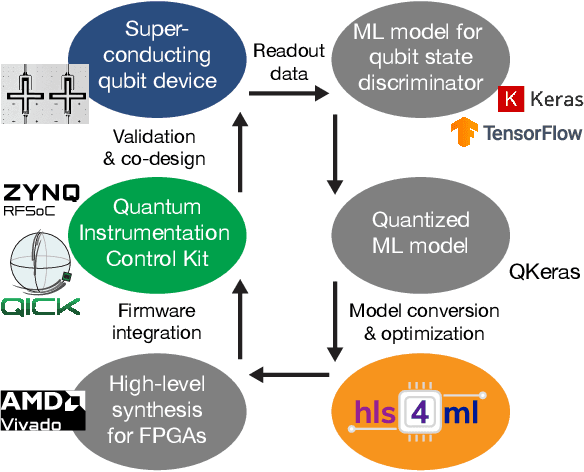
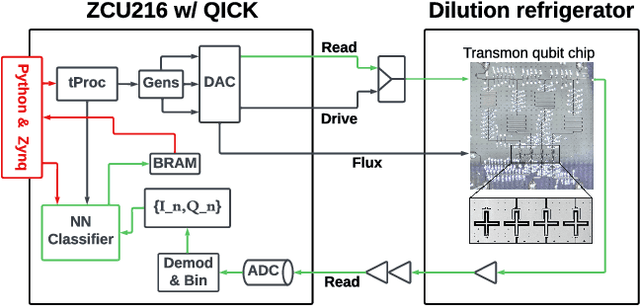
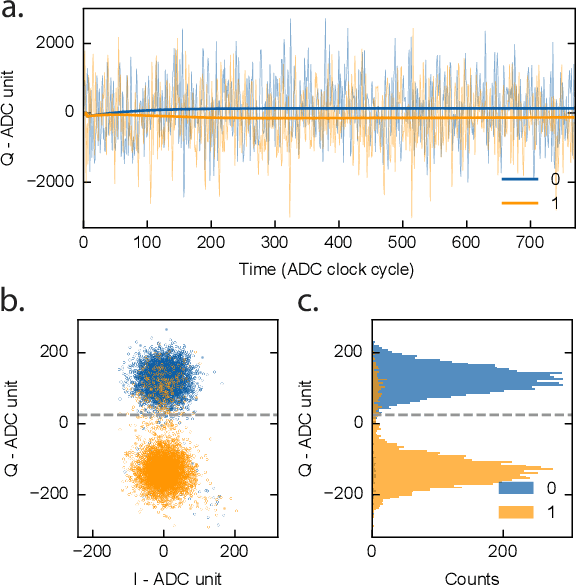

Abstract:We present an end-to-end workflow for superconducting qubit readout that embeds co-designed Neural Networks (NNs) into the Quantum Instrumentation Control Kit (QICK). Capitalizing on the custom firmware and software of the QICK platform, which is built on Xilinx RFSoC FPGAs, we aim to leverage machine learning (ML) to address critical challenges in qubit readout accuracy and scalability. The workflow utilizes the hls4ml package and employs quantization-aware training to translate ML models into hardware-efficient FPGA implementations via user-friendly Python APIs. We experimentally demonstrate the design, optimization, and integration of an ML algorithm for single transmon qubit readout, achieving 96% single-shot fidelity with a latency of 32ns and less than 16% FPGA look-up table resource utilization. Our results offer the community an accessible workflow to advance ML-driven readout and adaptive control in quantum information processing applications.
Semi-Supervised Domain Adaptation for Cross-Survey Galaxy Morphology Classification and Anomaly Detection
Nov 11, 2022



Abstract:In the era of big astronomical surveys, our ability to leverage artificial intelligence algorithms simultaneously for multiple datasets will open new avenues for scientific discovery. Unfortunately, simply training a deep neural network on images from one data domain often leads to very poor performance on any other dataset. Here we develop a Universal Domain Adaptation method DeepAstroUDA, capable of performing semi-supervised domain alignment that can be applied to datasets with different types of class overlap. Extra classes can be present in any of the two datasets, and the method can even be used in the presence of unknown classes. For the first time, we demonstrate the successful use of domain adaptation on two very different observational datasets (from SDSS and DECaLS). We show that our method is capable of bridging the gap between two astronomical surveys, and also performs well for anomaly detection and clustering of unknown data in the unlabeled dataset. We apply our model to two examples of galaxy morphology classification tasks with anomaly detection: 1) classifying spiral and elliptical galaxies with detection of merging galaxies (three classes including one unknown anomaly class); 2) a more granular problem where the classes describe more detailed morphological properties of galaxies, with the detection of gravitational lenses (ten classes including one unknown anomaly class).
Neural network accelerator for quantum control
Aug 04, 2022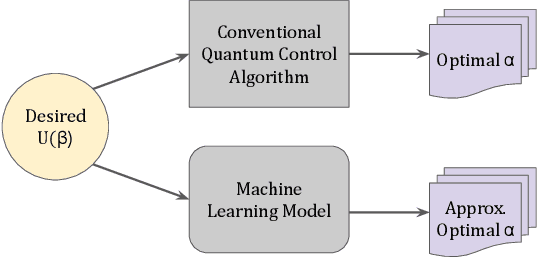
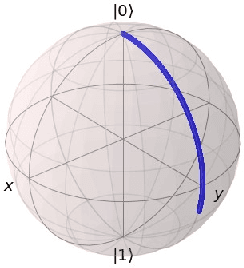
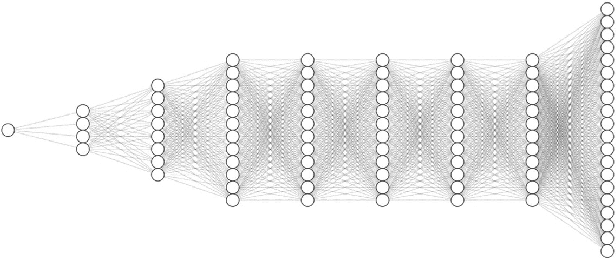
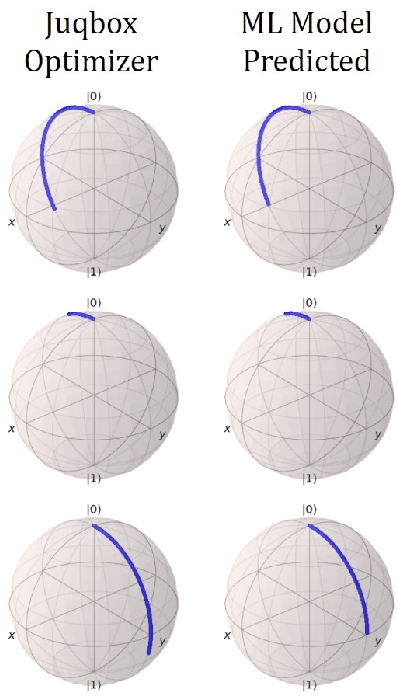
Abstract:Efficient quantum control is necessary for practical quantum computing implementations with current technologies. Conventional algorithms for determining optimal control parameters are computationally expensive, largely excluding them from use outside of the simulation. Existing hardware solutions structured as lookup tables are imprecise and costly. By designing a machine learning model to approximate the results of traditional tools, a more efficient method can be produced. Such a model can then be synthesized into a hardware accelerator for use in quantum systems. In this study, we demonstrate a machine learning algorithm for predicting optimal pulse parameters. This algorithm is lightweight enough to fit on a low-resource FPGA and perform inference with a latency of 175 ns and pipeline interval of 5 ns with $~>~$0.99 gate fidelity. In the long term, such an accelerator could be used near quantum computing hardware where traditional computers cannot operate, enabling quantum control at a reasonable cost at low latencies without incurring large data bandwidths outside of the cryogenic environment.
Inferring Convolutional Neural Networks' accuracies from their architectural characterizations
Jan 10, 2020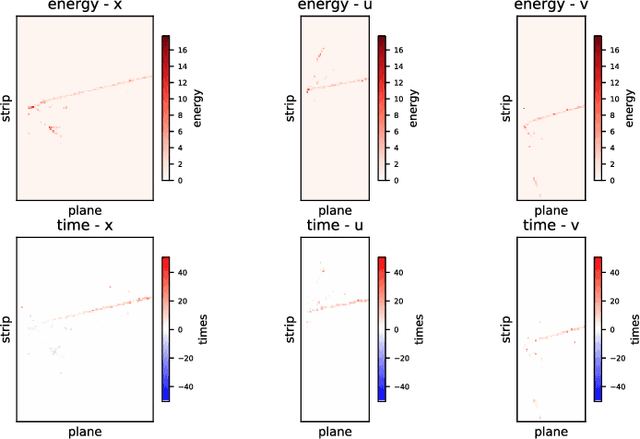
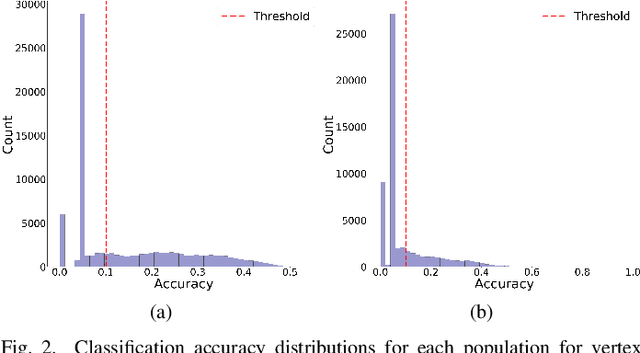
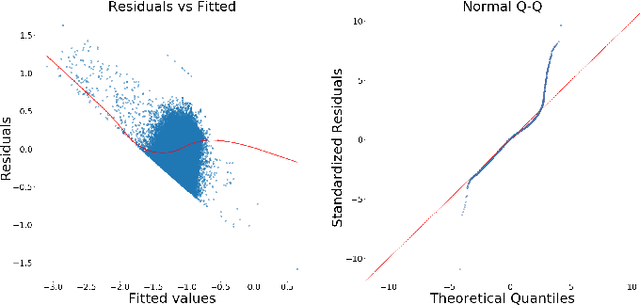
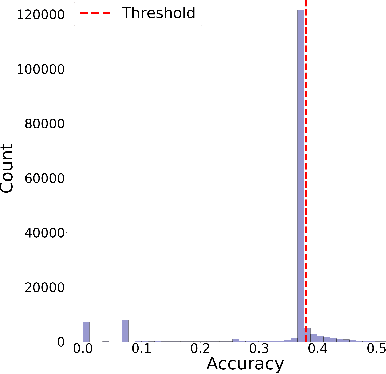
Abstract:Convolutional Neural Networks (CNNs) have shown strong promise for analyzing scientific data from many domains including particle imaging detectors. However, the challenge of choosing the appropriate network architecture (depth, kernel shapes, activation functions, etc.) for specific applications and different data sets is still poorly understood. In this paper, we study the relationships between a CNN's architecture and its performance by proposing a systematic language that is useful for comparison between different CNN's architectures before training time. We characterize CNN's architecture by different attributes, and demonstrate that the attributes can be predictive of the networks' performance in two specific computer vision-based physics problems -- event vertex finding and hadron multiplicity classification in the MINERvA experiment at Fermi National Accelerator Laboratory. In doing so, we extract several architectural attributes from optimized networks' architecture for the physics problems, which are outputs of a model selection algorithm called Multi-node Evolutionary Neural Networks for Deep Learning (MENNDL). We use machine learning models to predict whether a network can perform better than a certain threshold accuracy before training. The models perform 16-20% better than random guessing. Additionally, we found an coefficient of determination of 0.966 for an Ordinary Least Squares model in a regression on accuracy over a large population of networks.
Restricted Boltzmann Machines for galaxy morphology classification with a quantum annealer
Nov 14, 2019
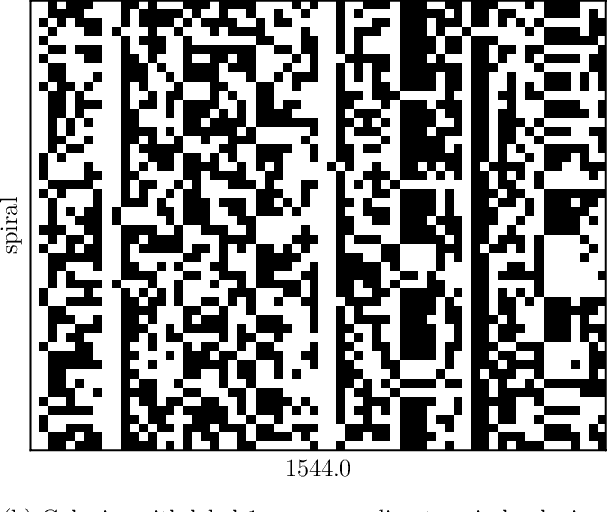

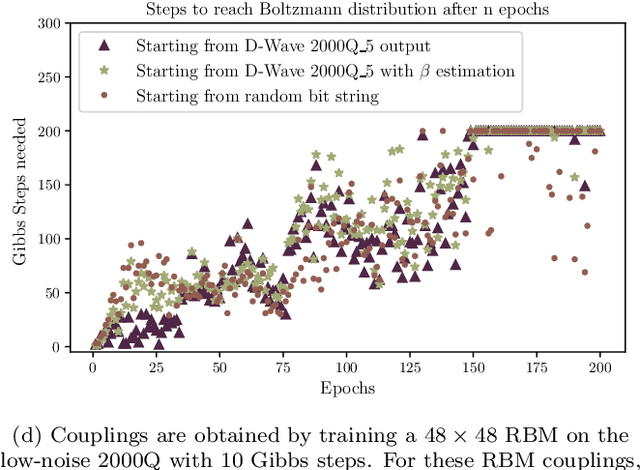
Abstract:We present the application of Restricted Boltzmann Machines (RBMs) to the task of astronomical image classification using a quantum annealer built by D-Wave Systems. Morphological analysis of galaxies provides critical information for studying their formation and evolution across cosmic time scales. We compress the images using principal component analysis to fit a representation on the quantum hardware. Then, we train RBMs with discriminative and generative algorithms, including contrastive divergence and hybrid generative-discriminative approaches. We compare these methods to Quantum Annealing (QA), Markov Chain Monte Carlo (MCMC) Gibbs Sampling, Simulated Annealing (SA) as well as machine learning algorithms like gradient boosted decision trees. We find that RBMs implemented on D-wave hardware perform well, and that they show some classification performance advantages on small datasets, but they don't offer a broadly strategic advantage for this task. During this exploration, we analyzed the steps required for Boltzmann sampling with the D-Wave 2000Q, including a study of temperature estimation, and examined the impact of qubit noise by comparing and contrasting the original D-Wave 2000Q to the lower-noise version recently made available. While these analyses ultimately had minimal impact on the performance of the RBMs, we include them for reference.
 Add to Chrome
Add to Chrome Add to Firefox
Add to Firefox Add to Edge
Add to Edge